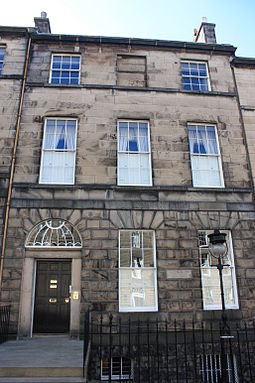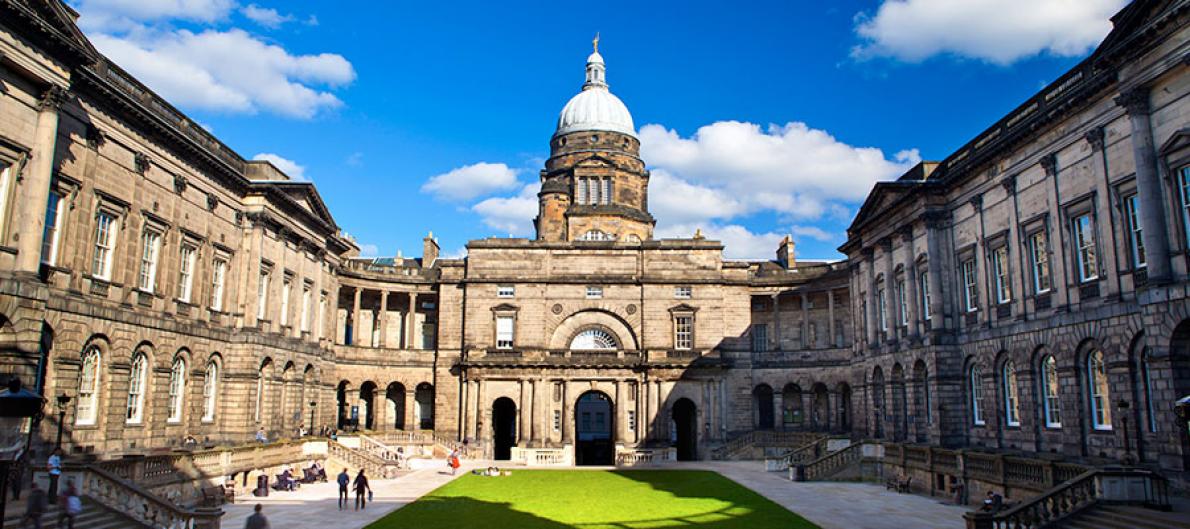Biography

James Clerk Maxwell
was born on June 13, 1831 in Edinburgh, Scotland.
His family was wealthy, and took to advancing
Maxwell's education from a young age. He was quite
gifted in his studies of religion as a child, and
could recite a number of religious passages from
memory. Maxwell was also know to be insatiably
curious. At 10 years old, Maxwell's mother died of
cancer and he was sent to study at the Edinburgh academy.
James Maxwell's
Birth Place

Image From: https://en.wikipedia.org/wiki/James_Clerk_Maxwell
During his time at the Edinburgh Academy,
Maxwell's talent went largely unrecognized. He
received several awards from the school;
however, he was still somewhat of an outcast. On
the contrary, his odd mannerisms earned him the
nickname "Dafty" from his classmates. This
resulted in a long period of social isolation
for Maxwell. Despite the negative opinions of
his peers, Maxwell continued diligently with his
studies which were dominated by geometry. By age
14, he had published his first academic paper on
the subject of Oval Curves. In this paper, he
expanded upon the ideas of Rene Descartes
despite never having read any of Descartes's works prior.
Present Day
University of Edinburgh

Image From: https://www.ed.ac.uk/studying/international
In
1847, Maxwell began attending the University
of Edinburgh. Maxwell excelled in his course
work with a minimal amount of effort during
this time, and was able to conduct private
research during his studies. His studies
during this time period consisted largely of
elastic solids and of Christianity. He would
go on to publish two papers for the
university on the matter of elastic solids,
and it would lay the groundwork for some of
his future studies. Unfortunately, during
his time at the university he was not
allowed to present on his own work because
of his age.
By 1850, Maxwell transferred to
Cambridge to continue his studies. By 1854,
Maxwell had earned his degree in mathematics
and was in the top of his class. He decided
to apply for a fellowship with Trinity
college immediately thereafter. In the mean
time, he continued his own private research
which was centered on the study of color.
His ideas would lead to the first color
photograph not long there after. In 1855
Maxwell was made a fellow of Trinity college
and shortly there after accepted a position
at the Marischal College as a professor.
First
Color Photograph

Image From: https://en.wikipedia.org/wiki/Color_photography
During his
time at Marischal
College, Maxwell spent a large amount
of time lecturing. However, this did
not deter him from pursing further
prizes and research. In this time
period, he committed his genius to the
study of Saturn's rings. He postulated
by a process of elimination that
Saturn's rings must be comprised of a
number of smaller particles as opposed
to one solid ring. This idea earned
him an Adams Prize. His ideas
regarding Saturn's rings would be
proved in the 1980's by space probe
images.
In 1860, Marischal
College merged with King's College
and Maxwell was left without a
position for a short period. However,
he quickly acquired a teaching
position in King's College and
continued his research. During
his time at King's College,
Maxwell would present most of
his most powerful ideas. These
ideas include: dimensional
analysis, Maxwell's equations,
and theories regarding the
motion of gases. He retired
from King's College in 1865
and continued his research in
his private home. He continued
to publish until his death in
1879.
|


